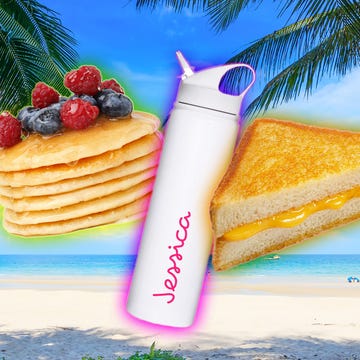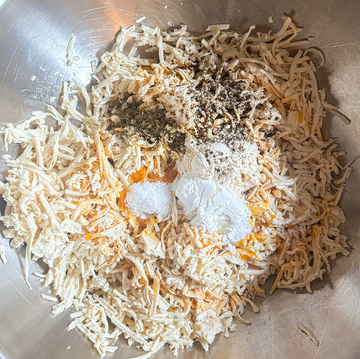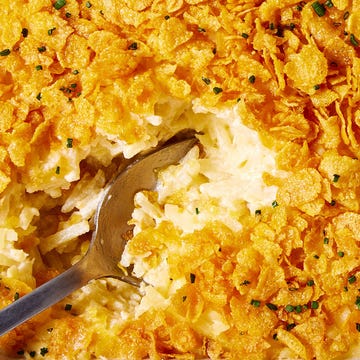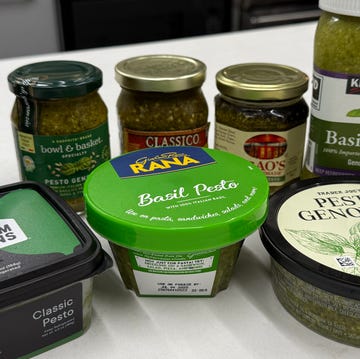11910s
The Cake: Traditional sponge cake, often made at the bride's home and iced at the confectioners' house. White icing cakes were plain white and decorated with natural flowers. In some countries, brides used orange blossoms or lilies of the valley.
21910s
Traditions & Facts: The husband and wife first cut the cake, followed by guests according to precedence. In some cultures, the bride made the first cut. White cakes became a symbol of affluence due to difficulty sourcing refined sugar.
Advertisement - Continue Reading Below
31920s
The Cake: Wedding cakes preserved their white icing covers and included 'Art Deco' designs: bold geometric curves, zigzags and chevrons in metallic colors, embracing the glamour of the roaring '20s. People decorated cakes with feathers, frames, jewels, and ornaments with flowers on top.
41920s
Traditions & Facts: The lavish accessories and the Art Deco theme of F. Scott Fitzgerald's The Great Gatsby became a prominent source of inspiration for 1920s weddings. Commercial icing techniques became more complex and expensive. This lead to affordable boxed mixes appearing in the late '20s, allowing more couples to have a wedding cake.
Advertisement - Continue Reading Below
51920s
Traditions & Facts: King George VI married in 1923 and his cake was 10 feet high and weighed 800 pounds. It included figurines, cherubs and flowers on intricate icing. Identical cakes were make and given out at tea parties to the public.
61930s
The Cake: Bakers started producing wedding cakes, which made them more affordable and widely available. Cake toppers were now common for most wedding cakes and were created in a variety of materials such as porcelain, wood and Bakelite.
Advertisement - Continue Reading Below
71930s
Traditions & Facts: The custom of the bride and groom cutting the cake together using a sword or knife became a tradition.
81930s
Traditions & Facts: The Lambeth Method was popularized in 1934 as a method of piping numerous rows of icing in extreme and delicate detail — quickly becoming one of the most sought after decorating techniques.
Advertisement - Continue Reading Below
91940s
The Cake: Due to wartime rationing, cakes were mostly homemade. Recipes had nutmeg, cinnamon and cloves for flavoring and less butter, milk, and eggs. Wedding cakes rarely exceeded three tiers and featured few decorations such as ribbons, bows, and flowers. Simple pastels and embellishments were included. Lambeth icing was still very popular.
101940s
Traditions & Facts: The groom toppers of the 1940s usually had military attire with Army, Navy, or Marines uniforms.
Advertisement - Continue Reading Below
111940s
Traditions & Facts: Wedding cakes had pillars made of china or decorative designs, like swans and baskets. These decorations were treasured and often handed down from mother to daughter.
121950s
The Cake: Fruit cakes iced in white royal icing were in vogue. This period is famous for using muscovado sugar, fine quality fruits, and premium liquors in the treats. The decorations consisted of natural flowers or figurines of the traditional bride and groom on top.
Advertisement - Continue Reading Below
131950s
Traditions & Facts: You know those iconic bride and groom toppers? They went mainstream in this decade, thanks to how popular and affordable plastic was. After food rationing ended in 1947, wedding cake décor became extremely detailed.
141950s
Traditions & Facts: Grace Kelly and Prince Ranier III of Monaco had a six-tiered wedding cake with a three-dimensional replica of Monaco's Pink Palace.
Advertisement - Continue Reading Below
151960s
The Cake: Inspired by celebrity weddings, cakes became taller and more elegant. The white towers of edible art were as prominent and elaborated as the cakes from the beginning of the century. Boiled icing or "seven-minute icing," made by gradually pouring a hot sugar syrup over stiffly beaten egg whites, rose to prominence because of its versatility.
161960s
Traditions & Facts: Priscilla and Elvis Presley married in December of 1966, their six-tier wedding cake became an icon and cost $3,200 — roughly $22,000 in today's economy.
Advertisement - Continue Reading Below
171960s
Traditions & Facts: Receptions were commonly only for close friends and family. At most gatherings, family members served the guests. Post-nuptial celebrations had prominent cakes and served punch. Couples usually shared a large cake and toasted alongside the guests.
181970s
The Cake: The tiers of the cakes often were covered with almond paste and smooth white icing in different shapes, and the upper tiers were supported by pillars. Cakes were generally decorated with gold and silver colored plastic ornaments, a miniature bride and groom, bells, ribbons, or small edible flowers.
Advertisement - Continue Reading Below
191970s
The Cake: The tiers of the cakes often were covered with almond paste and smooth white icing in different shapes, and the upper tiers were supported by pillars. Cakes were generally decorated with gold and silver colored plastic ornaments, a miniature bride and groom, bells, ribbons, or small edible flowers.
201970s
Traditions & Facts: Royal icing became very popular because its hard surface was ideal for supporting the tiers. Buttercream was also on the rise, as cake decorators started experimenting with new designs.
Advertisement - Continue Reading Below
Advertisement - Continue Reading Below
Advertisement - Continue Reading Below
































